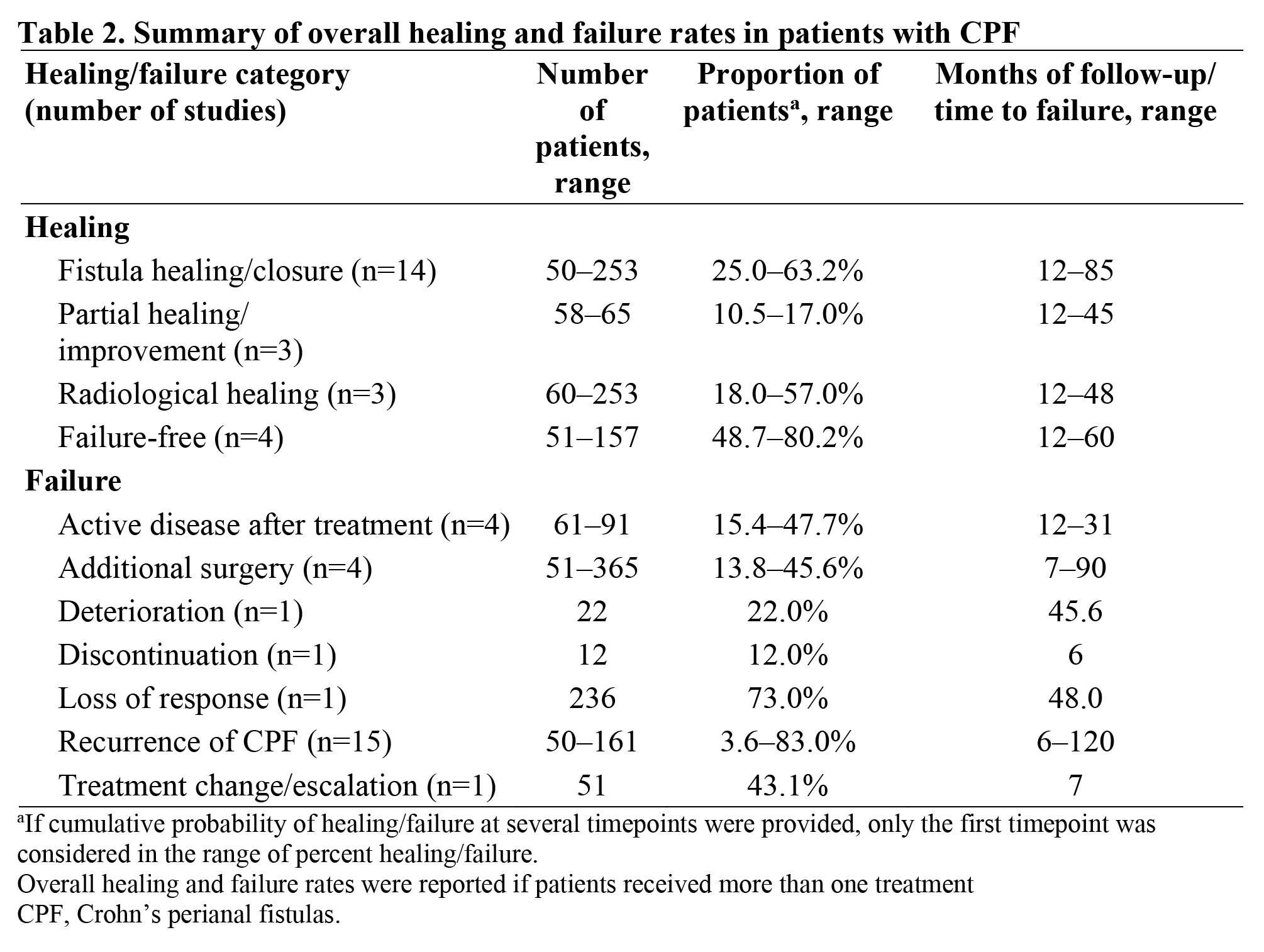P342 Treatment experience of perianal fistulising Crohn’s disease: a systematic literature review
McKay, C.(1)*;Pacis, S.(2);Bolzani, A.(2);Geransar, P.(3);Panés, J.(4);
(1)Takeda Pharmaceuticals USA Inc., Global Evidence & Outcomes - Gastroenterology, Cambridge- MA, United States;(2)Ingress-Health HWM GmbH an affiliate of Cytel Inc., Real World Evidence, Hannover, Germany;(3)Takeda pharmaceuticals International AG, Rare GI, Zurich, Switzerland;(4)Hospital Clínic de Barcelona- IDIBAPS- CIBERehd-, Gastroenterology, Barcelona, Spain;
Background
The treatment of complex Crohn’s perianal fistulas (CPF) is challenging, requiring both medical and surgical approaches. The treatment goal is fistula closure, but long-term success rates are modest and recurrence is high after both medical and surgical interventions. This systematic literature review (SLR) aimed to better understand the treatment patterns and outcomes associated with complex CPF.
Methods
Electronic databases (MEDLINE, Embase, EBM Reviews, EconLit) were searched. PICOS-T (population, interventions, comparators, outcomes, study design, time) selection criteria were used to identify relevant studies, and two reviewers independently screened and extracted data. Articles included observational studies with >50 patients published in English from 1 Jan 2015 to 17 Feb 2022. The study was still included if complex CPF was not defined. The NIH Quality Assessment Tool for Observational Cohort and Cross-Sectional Studies was used to assess therisk of bias/quality of studies (good, fair or poor). All interventions were of interest. Treatments were grouped into 16 intervention categories, and treatment responses into 4 healing and 7 failure categories. Data on five morbidity categories (faecal incontinence, abscess, anorectal stricture, proctitis and sepsis) were extracted and summarized using descriptive statistics.
Results
In total, 140 studies were included; of which most were of good (n=14) or fair (n=98) quality regarding risk of bias. Few studies (n=24) defined complex CPF; hence, outcomes included all types of CPF. Included studies reported on treatment patterns, failures and responses (n=63) and morbidity (n=30). Loose seton was the most commonly recorded first- and second-line intervention given in a study. Among drug therapies, immunomodulators and biologics were the most common first- and second-line interventions, respectively (Table 1). Across all categories, healing rates ranged from 10.5% to 80.2% and failure rates from 3.6 to 83.0% (Table 2). Of the top five most frequent intervention categories, fistulectomy/-otomy was associated with the highest rate of healing (fistula healing/closure), and loose seton placement was associated with the highest rate of failure (recurrence) (Table 3). Reporting of morbidity varied widely; of which, abscesses were the most common reported at CPF diagnosis, followed by proctitis (Table 4).



Conclusion
This SLR detailed a broad range of current therapies, healing and failure rates, and heterogeneity in timing and treatment sequencing in patients with CPF. These results reflect the challenging nature of treating CPF with current therapies and highlight an unmet need for reliable treatment options to improve outcomes for patients with CPF.
Funding: Takeda Pharmaceuticals USA, Inc.


